How are people organising the 20 degeee downangle ?
Could you get someone to weld a few single chain links onto the back of the plate and hang it from those ?
A photo would be interesting.
Welcome guest, is this your first visit? Create Account now to join.
Welcome to the NZ Hunting and Shooting Forums.
Search Forums
User Tag List
+ Reply to Thread
Results 31 to 45 of 66
-
29-06-2016, 02:20 PM #31Member

- Join Date
- Mar 2012
- Location
- Waikato
- Posts
- 2,083
-
-
29-06-2016, 02:23 PM #32
What's the need for the downward angle? Surely the gongs are in a place which is appropriate to begin with?
-
29-06-2016, 07:44 PM #33Member

- Join Date
- Dec 2011
- Location
- Martinborough
- Posts
- 326
Downward deflection?
-
29-06-2016, 08:15 PM #34Member

- Join Date
- Sep 2015
- Location
- North island
- Posts
- 752
hardly any need for rifle work, whats the point of shooting a gong inside 400 meters at the end of the day??.... to see the dent in it or something
-
29-06-2016, 09:12 PM #35
The 20 deg angle serves two purposes:
1. It ensures that the projectile splatters in a downward direction and into the ground rather than off to the side or up, potentially into an unsafe zone risking injury to someone.
2. It reduces the energy that the plate has to absorb when the projectile hits, therefore less damage to the plate, therefore your plates last longer.
The issue of uncontrolled deflection of projectiles is becoming more and more of an issue as awareness improves. Lots of pistol clubs have now banned the likes of poppers and falling plates that hinge backwards because competitors 'chase the plate' with rounds as it falls backwards resulting in and upward facing plate and projectiles skipping out of the range safety zone/back drop. They now only allow forward facing targets that fall forward when hit.
-
29-06-2016, 09:14 PM #36
good info, thanks @hotbarrels
-
29-06-2016, 09:15 PM #37
If the gong is hung near top it naturally deflects down
-
29-06-2016, 09:24 PM #38
Yes, hanging off chains is an option and you can position the chain mounting points such that the plate will hang at 20 deg. The biggest issue I see with chains is the time it takes for the target to resettle after being hit. If the target is swinging then the 20 deg safety angle is constantly changing. Therefore it you do a rapid fire on the plate and it has swung to the wrong angle, then you have the potential to deflect a round to where you don't want it.
I will try and post some images of a target stand and mounting bracket that I have developed for our club targets. These are designed to protect the stand from all deflections and/or miss placed shots. The only surface visible to the shooter is the plate. This keeps maintenance to a minimum, and the setup and knock down is as simple as setting out electric fence standards.
-
29-06-2016, 09:38 PM #39
-
29-06-2016, 09:45 PM #40
Here's some videos showing typical ricochet issues highlighted by using tracers. Note the completely random directions for the rounds, even coming off the ground in the first video. If they weren't using tracers, they would have no idea where the rounds are going. Steels at the wrong angles are a major cause of ricochets.
https://youtu.be/PcJBJYH7Xi8
https://youtu.be/xQWtRBTP58k
https://youtu.be/gZW9I9Ka2B0
https://youtu.be/rJyKyyX7YG8
-
29-06-2016, 09:56 PM #41
-
29-06-2016, 11:15 PM #42
The tracer part generaly leaves the projectile on impact.
Sent from my SM-G800Y using Tapatalk"Hunting and fishing" fucking over licenced firearms owners since ages ago.
308Win One chambering to rule them all.
-
30-06-2016, 06:39 AM #43
I would suggest that that may be the case on the rare occasion, but not the norm. In one of the videos you can see an example of that happening where there is what looks like a firefly whizzing around at low altitude close to the target. However the majority of the ricochets are full projectiles just based on the speed and trajectory of the flight. No tracer material on its own has the mass to carry that flight path.
Either way, it is still a situation where high speed materials are leaving the safety of the backstop.
-
30-06-2016, 08:12 AM #44Member

- Join Date
- May 2012
- Location
- Taranaki
- Posts
- 1,686
Would be interesting to test this i.e. put the targets in a tunnel and see where all the projectiles or projectile fragments go.
You cannot miss fast enough!
Facebook: https://www.facebook.com/GPREventsNZ
Youtube: https://www.youtube.com/user/sgil045
-
30-06-2016, 07:09 PM #45
Crappy photos as its raining and they are taken under fluro in the workshop but you will get the idea.
Here is what we came up with for our steels. These are deliberately designed to be mounted low to the ground for range safety rules specific to our range, but you could mount them on longer uprights if you choose. Having them mounted low to the ground means that the ground spike is largely protected from stray bullets. One of the criteria we set for the design was for it to be low maintenance.
Ground spike is made out of 25x25x3mm MS angle iron with the vertical spikes approx 200mm long for ground penetration. The riser above the horizontal bar can be whatever length you want depending on how high you want the target off the ground.
The mounting bracket that is welded to the back of the AR500 target plate started out as a piece of 35x35x4mm RHS 50mm long welded to a 50mmx3mm flat bar across the top at the correct length to give the RHS a 20 deg angle to the target plate. From this prototype we then got some brackets laser cut and folded to better support the RHS and give a greater weld area and hence strength. The bracket closes off the top of the RHS so that the vertical riser on the angle iron ground spike cannot pass through.
When mounted on the spike, the target cannot rotate and will not bounce, will not come off the stake but has enough movement to allow impact energy to dissipate and to provide a degree of 'ring' on impact.
These have withstood close range impacts with a 50AE and it didn't shake the spike out of the ground. We have come up with an additional spreader bar that can go over the vertical riser on the ground spike before the target plate is fitted to provide extra recoils resistance but it has never been needed.
The laser cut brackets work very well and are ideal when making up larger numbers of targets but aren't necessary if you are only making a couple of plates - box section and flat bare will work.
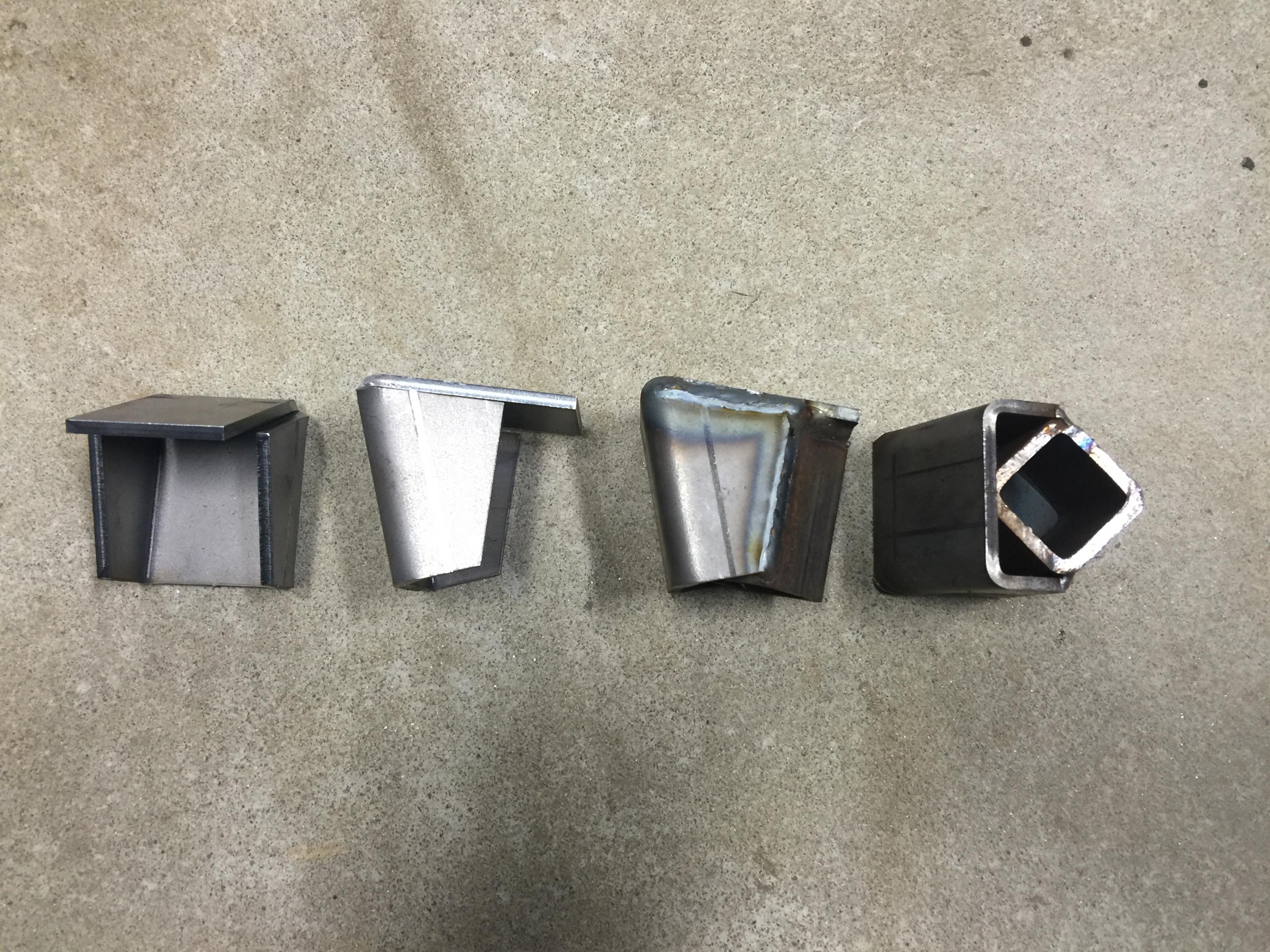
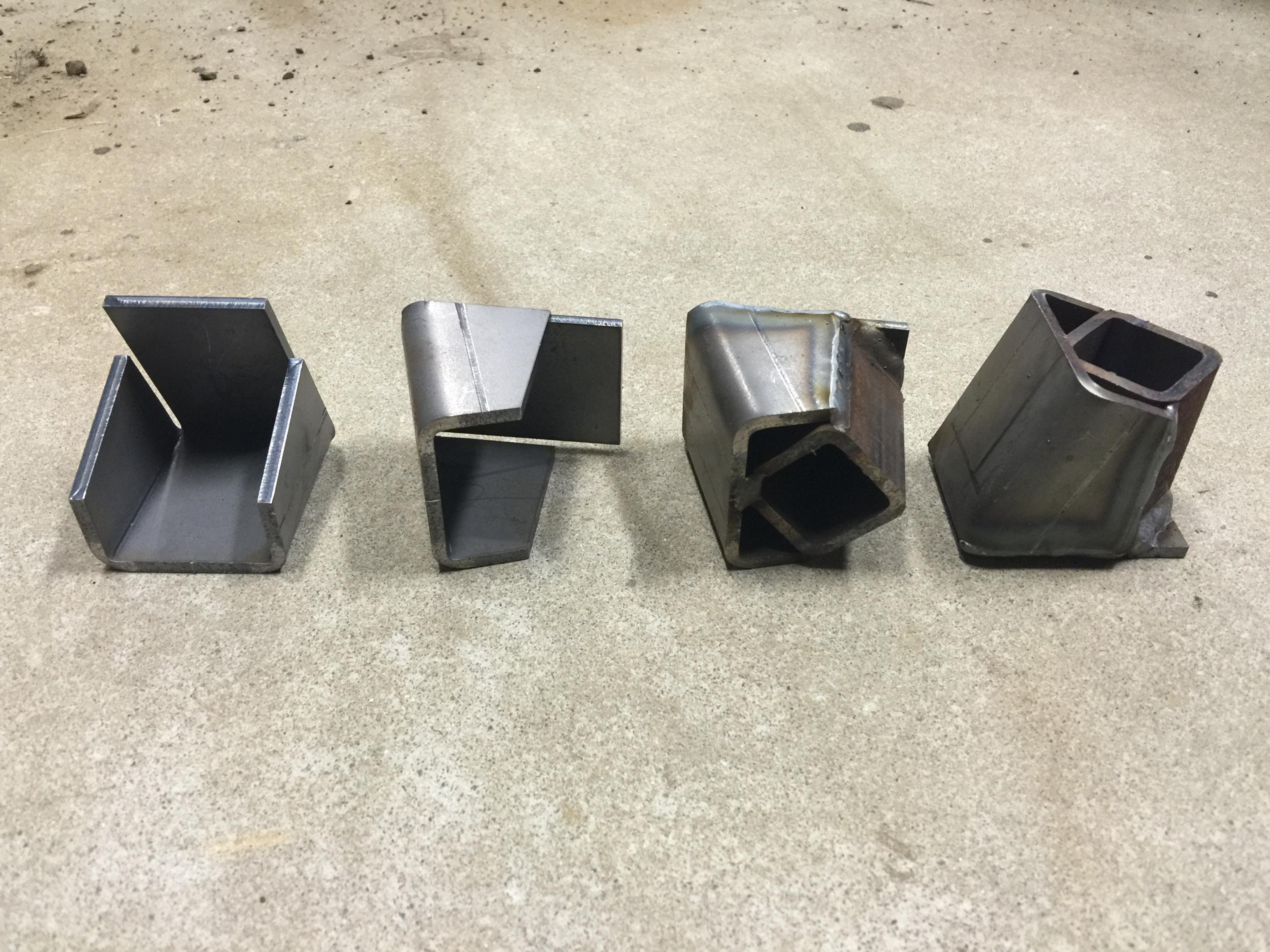
Images showing the shape of the laser cut bracket and the welded assembly with the 35x35x4 RHS welding in place.
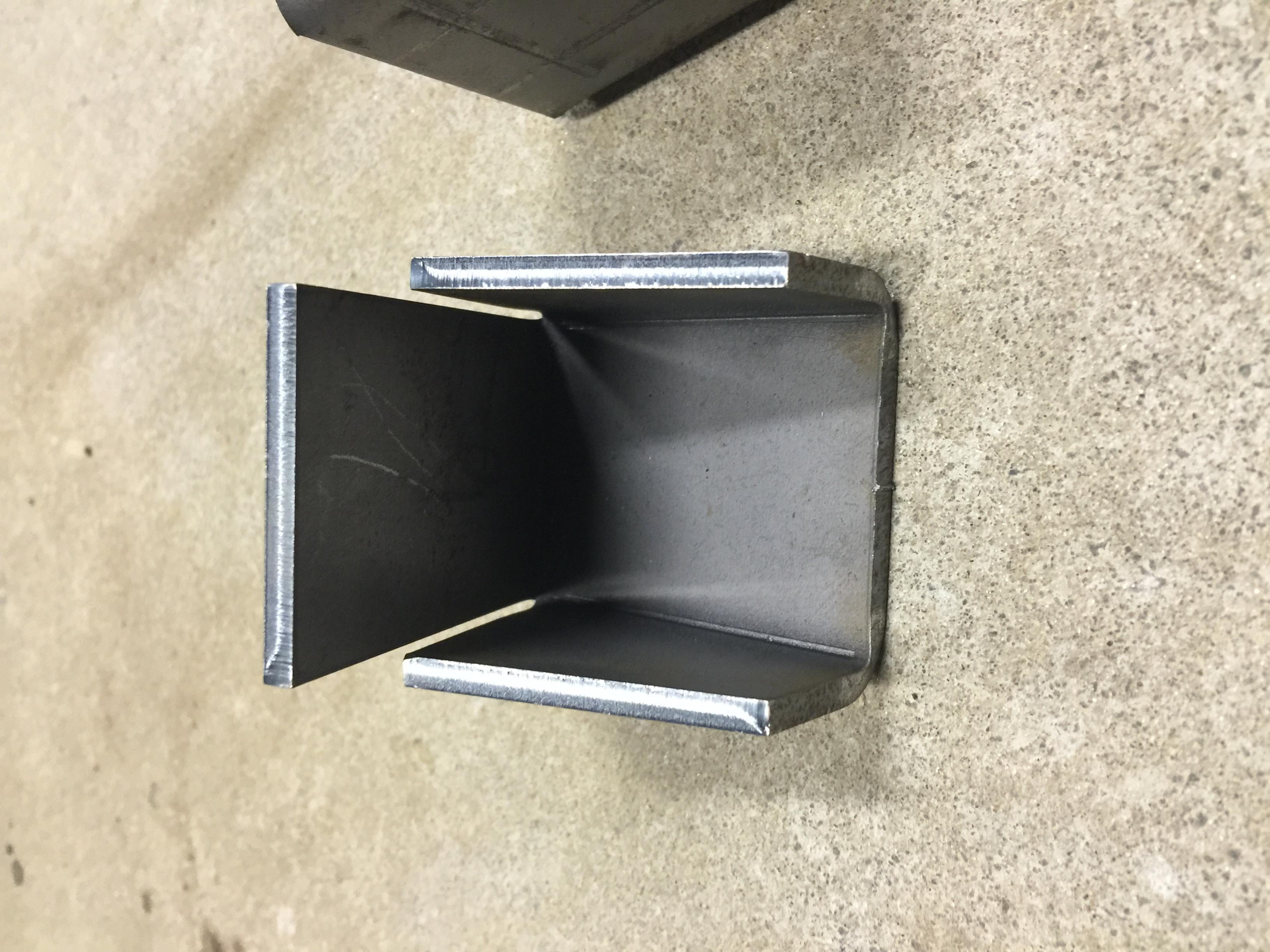
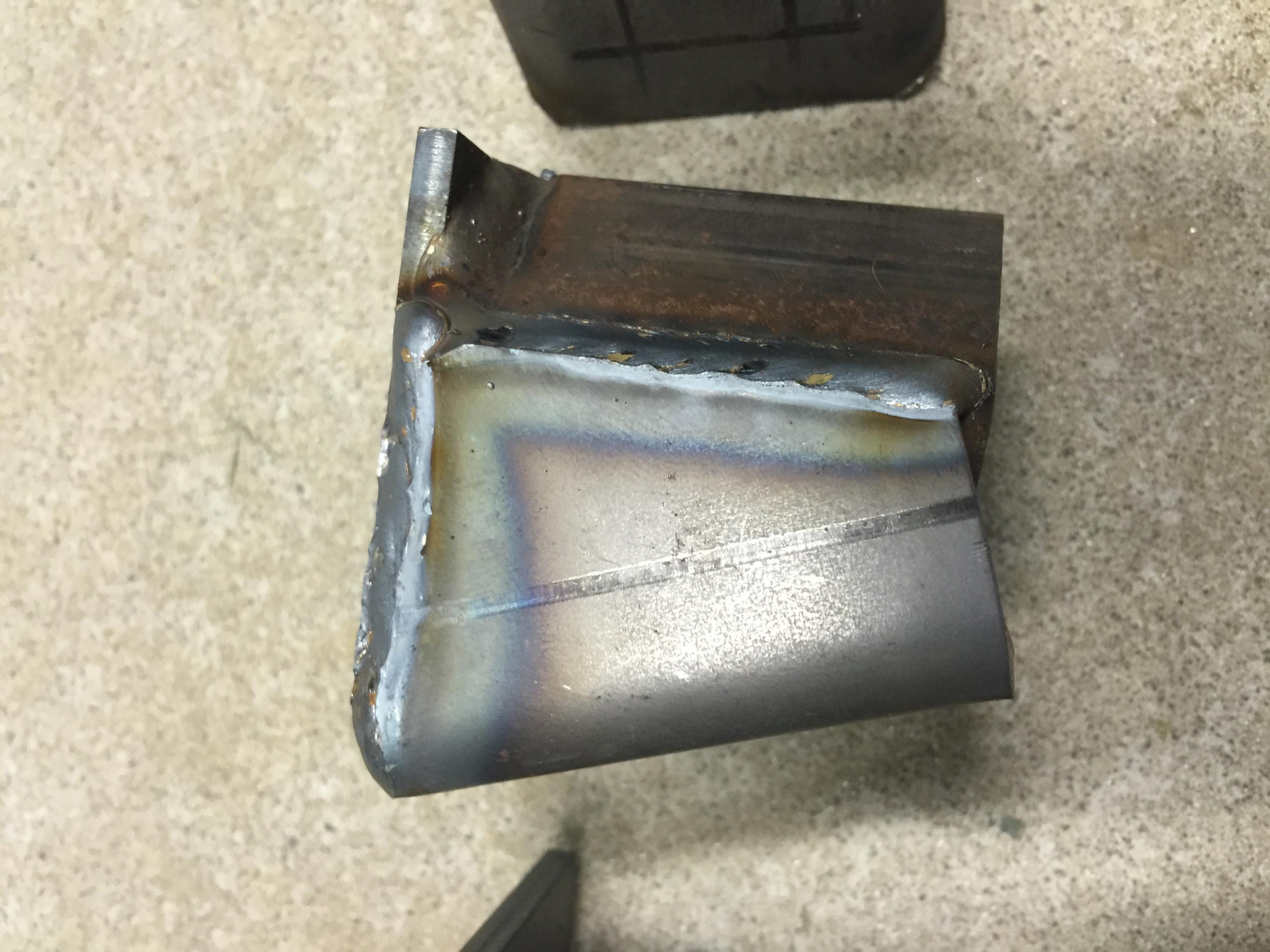
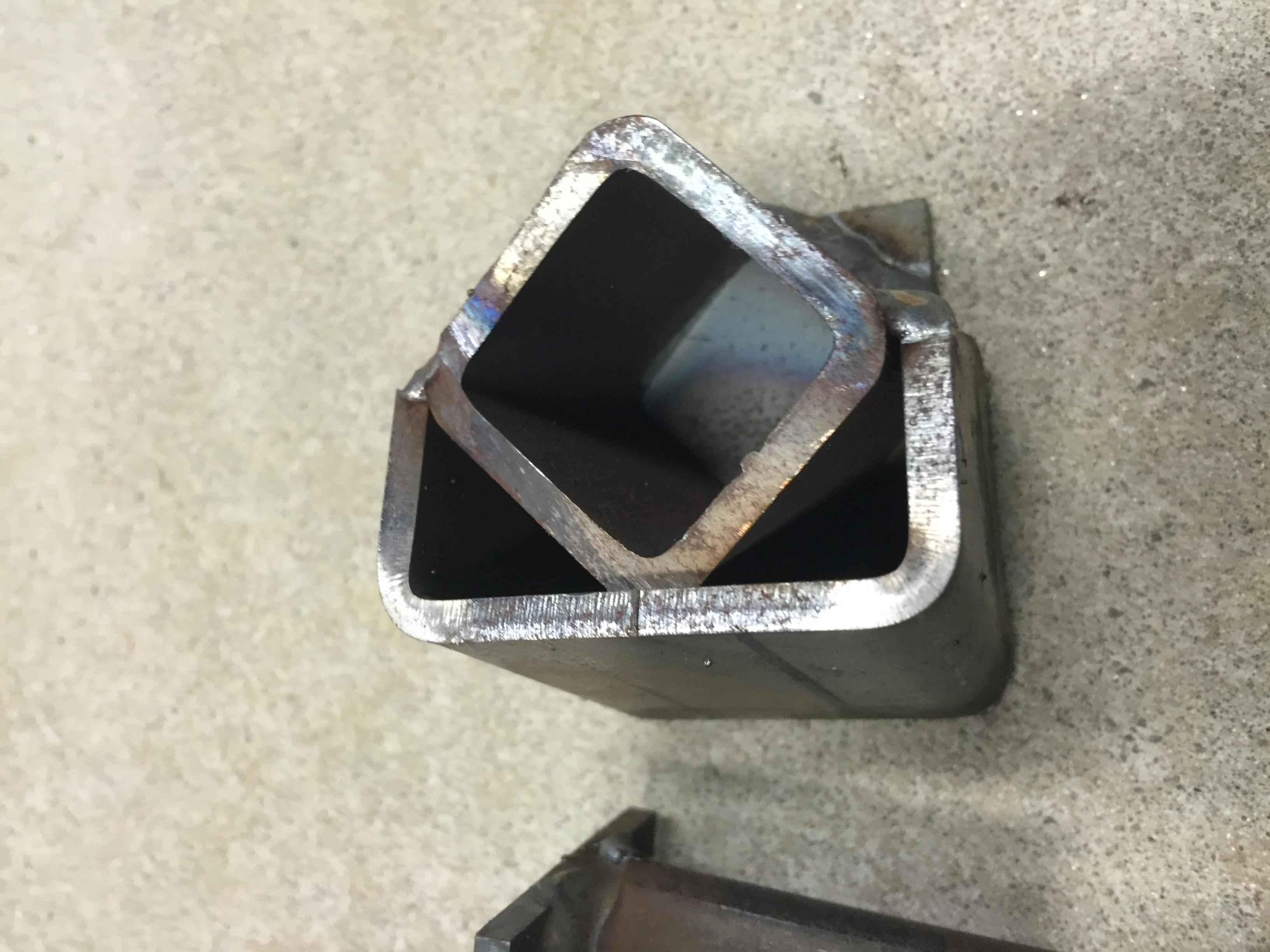
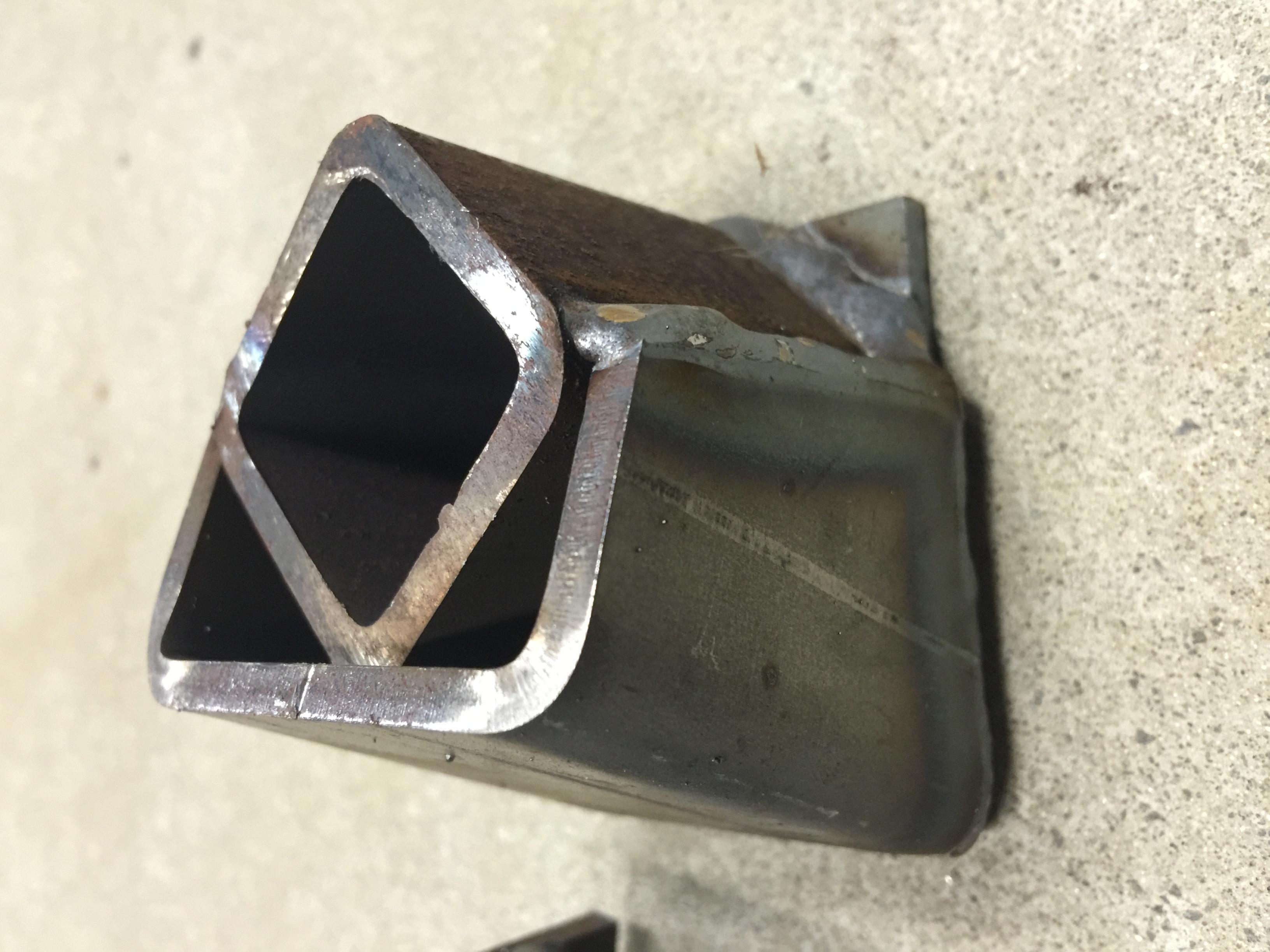
Close ups of bracket assembly.
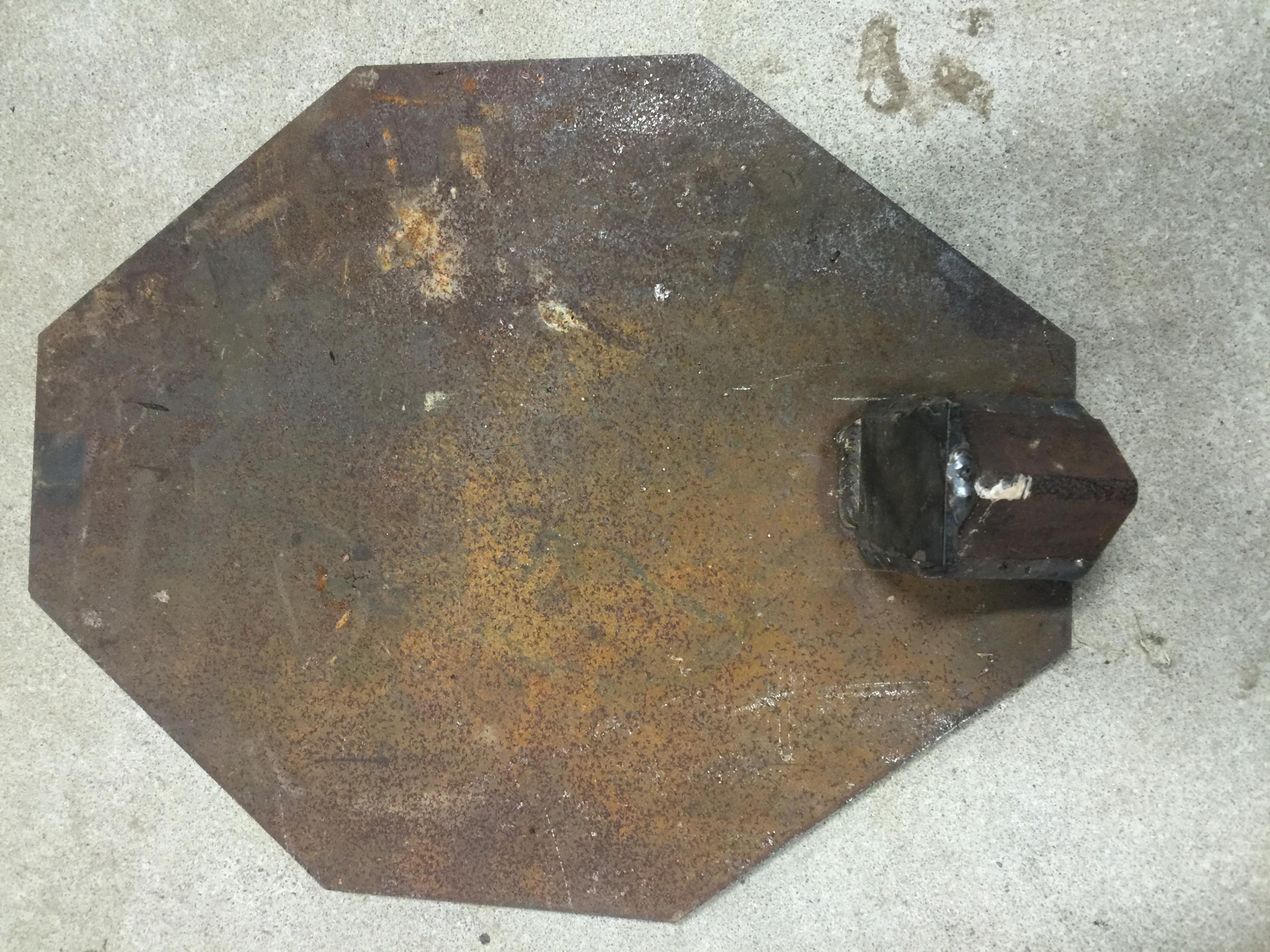
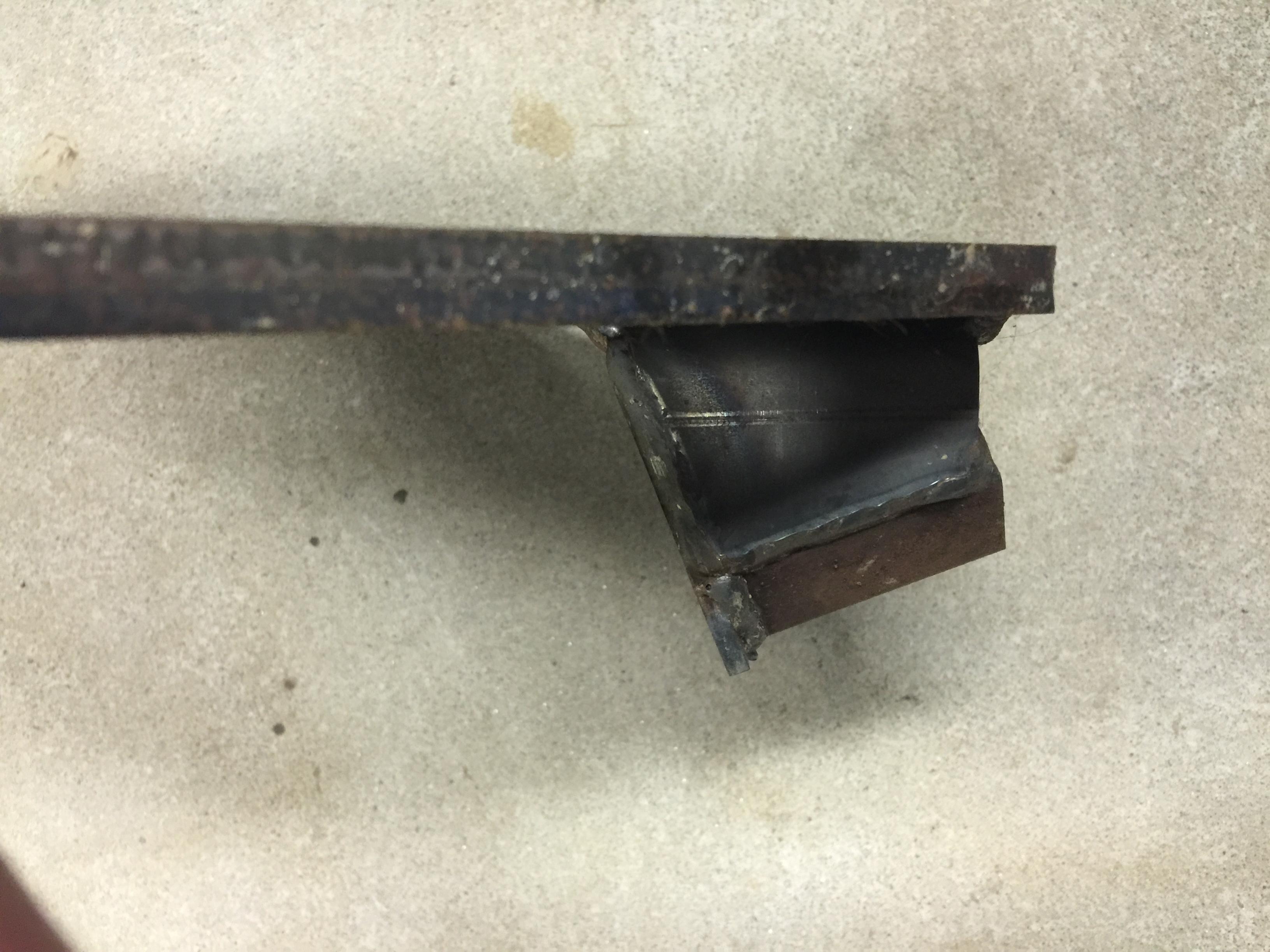
Bracket welded in place on the back of the target, giving a 20 deg mounting point.
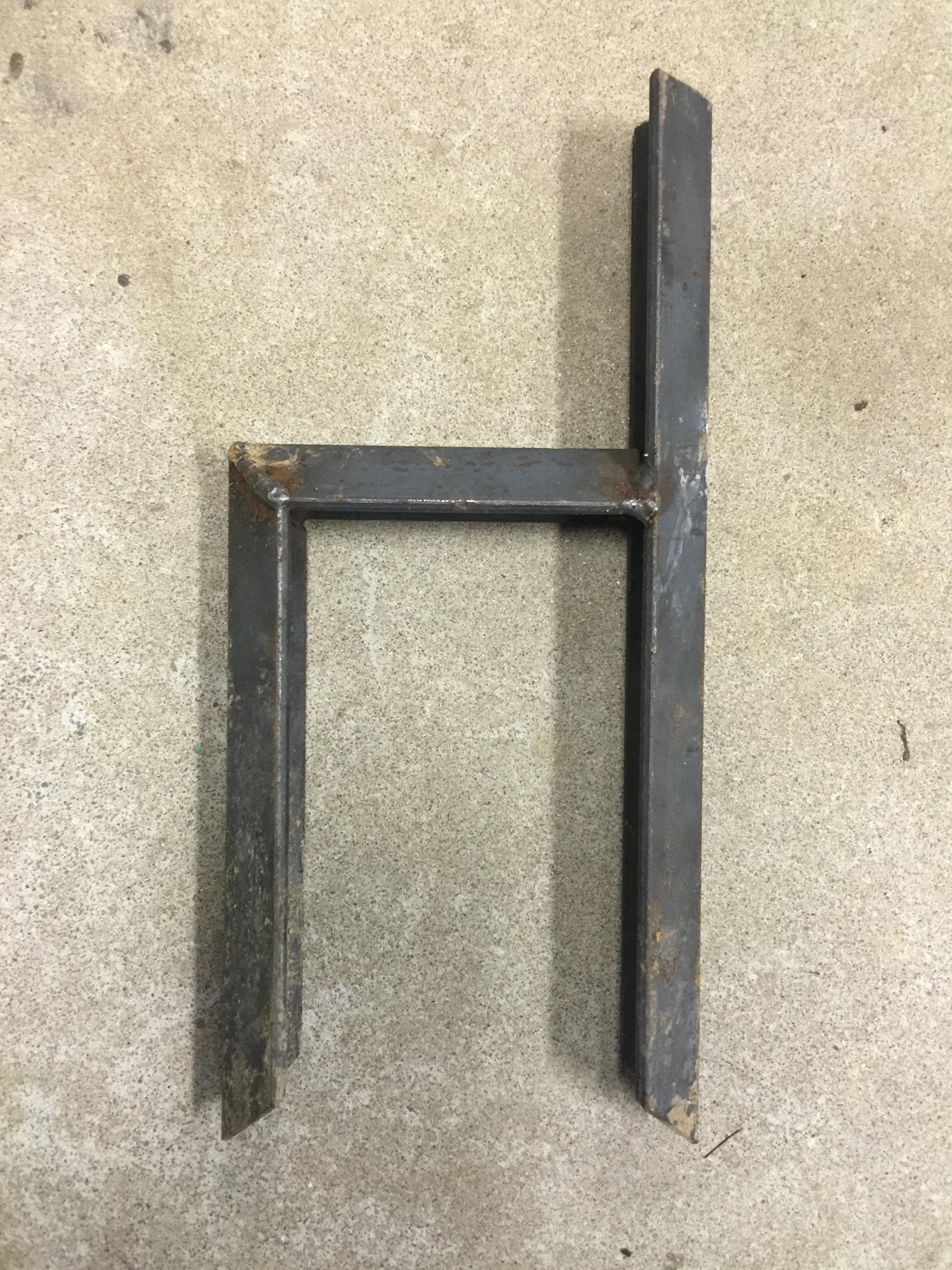
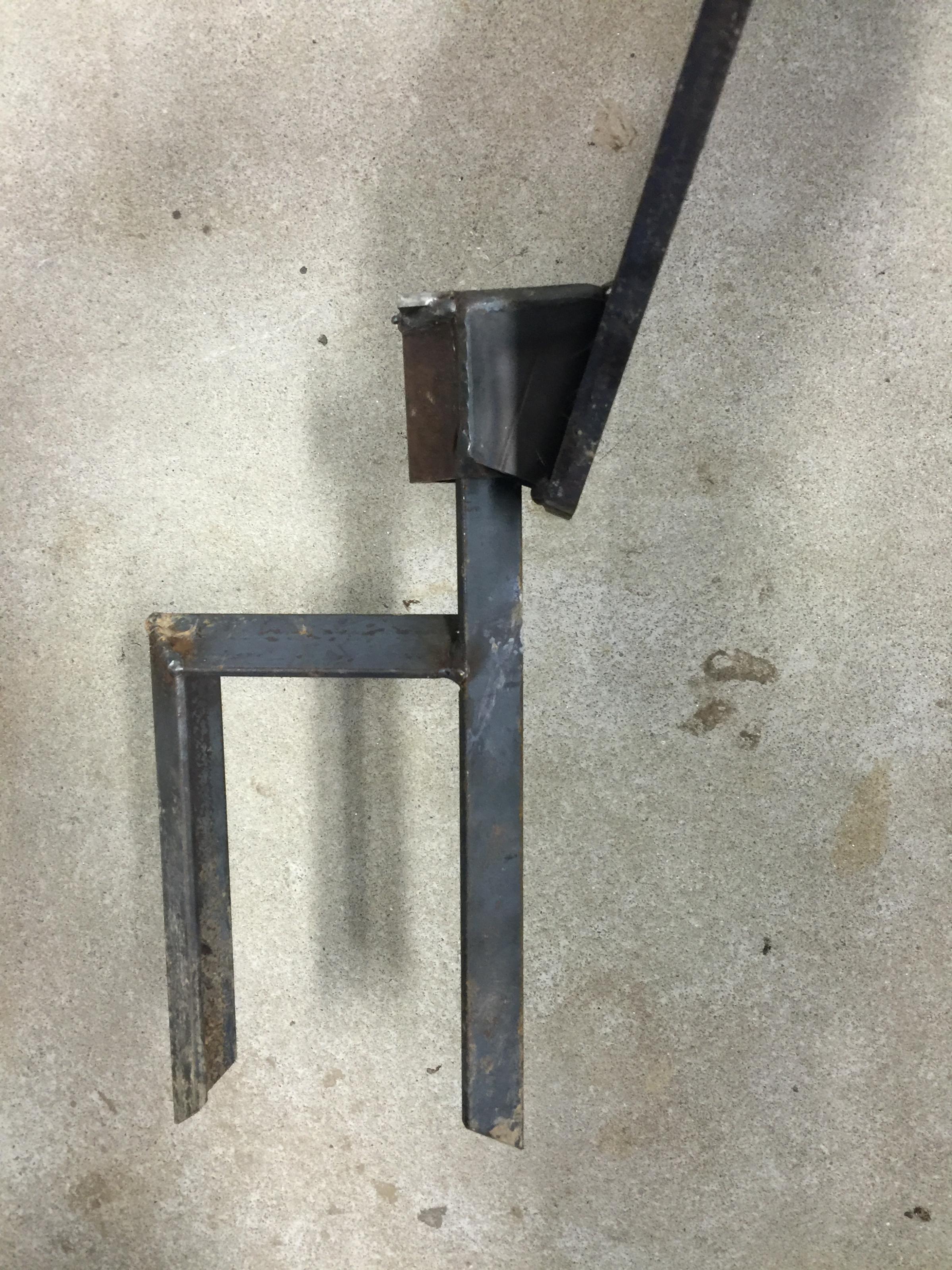
Ground spike and ground spike with target plate mounted. If you look closely, you can see a lead line on the ground spike just below the target plate matching the plate angle, resulting from the bullet splatter. There is no damage to the ground spike unless you hit it directly with a bullet. In service, after 20 rounds, you will find a 1-1.5m long trench form under the target plate where the bullet splatter has been directed down to the ground by the 20 deg plate angle.
Hope this helps.Last edited by hotbarrels; 30-06-2016 at 07:16 PM.
Similar Threads
-
gongs
By Pengy in forum ShootingReplies: 10Last Post: 06-10-2015, 02:44 PM -
Any one want any Gongs?
By Blaser in forum ShootingReplies: 30Last Post: 29-01-2015, 07:27 AM -
.22 gongs
By big_foot in forum ShootingReplies: 26Last Post: 25-04-2014, 03:05 PM
Tags for this Thread
Welcome to NZ Hunting and Shooting Forums! We see you're new here, or arn't logged in. Create an account, and Login for full access including our FREE BUY and SELL section Register NOW!!





 42Likes
42Likes LinkBack URL
LinkBack URL About LinkBacks
About LinkBacks



 Reply With Quote
Reply With Quote



Bookmarks